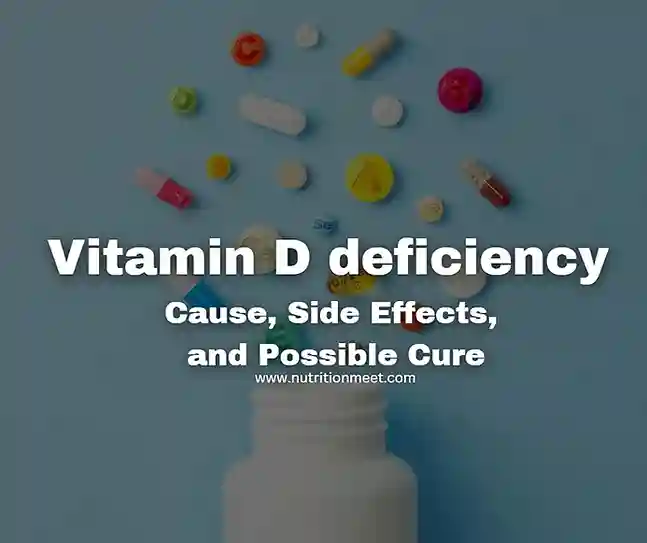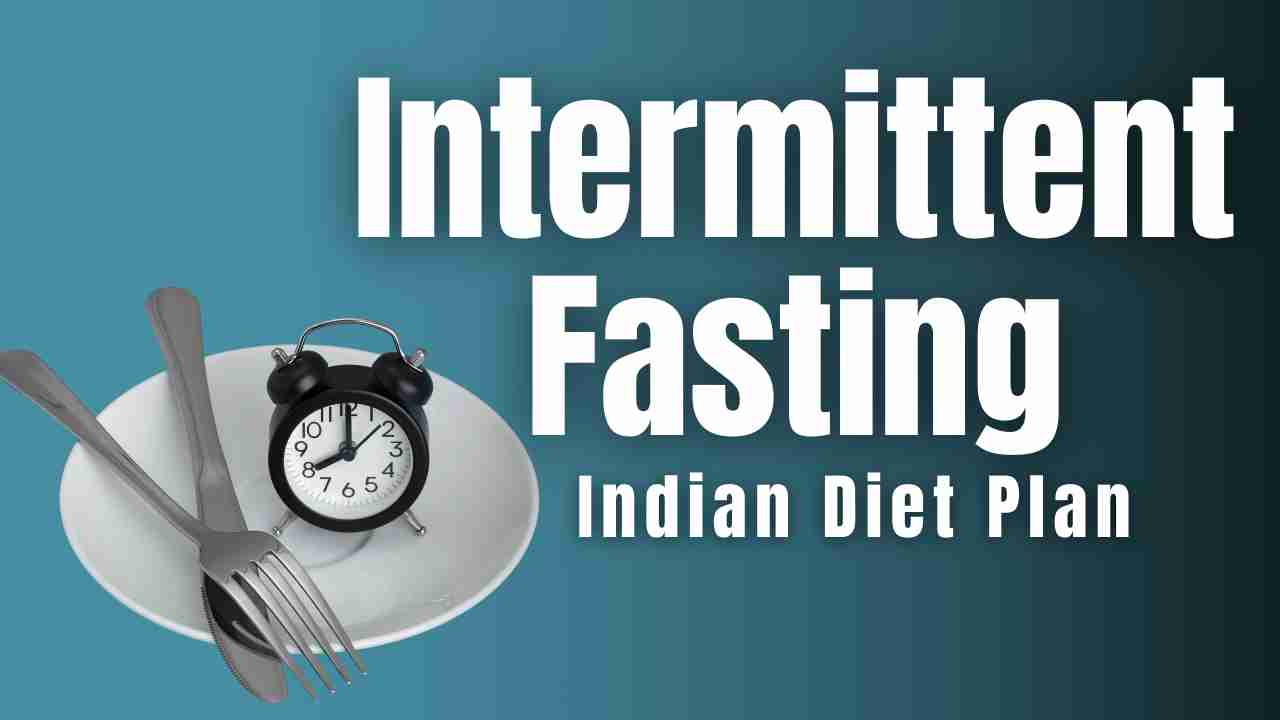The human body is a complex machine made of vitamins and minerals. And fortunately, our bodies make all the vitamins and minerals from raw materials that we supply through dietary intake and other readily available natural resources. But what is side effects of Vitamin D deficiency, and how is it important for our body? Let’s take an answer.
There are 13 essential vitamins [1], and Vitamin D is one of them, which is very famous these days because of its inefficiency in the body, which leads to more serious diseases in human life. Amazingly, more than 1 billion people around the world are on the list with vitamin D deficiency [2].

Table of Contents
What is vitamin D
Vitamin D is an essential fat- soluble vitamin for bone health, calcium homeostasis, immunomodulation, cell proliferation, and differentiation [6].
It was first identified in the 20th century. A unique characteristic of vitamin D is that it can be obtained from food as well as sun rays, specifically, UV B rays [15].
Since long serum 25-hydroxyvitamin D (25(OH)D) is used to measure vitamin D status, but according to reports, only a fraction of (25(OH)D) reached gets converted into its active form 1,25(OH)2D, therefore its better to measure total 25(OH)D levels [7].
Types of Vitamin D
There are two major forms of vitamin D that is
Vitamin D2 or Ergocalciferol
It is mainly known as a man-made vitamin that is commercially synthesized and found mostly in fortified foods and dietary supplements [16].
Vitamin D3 or Cholecalciferol
Vitamin D3 can be naturally secreted in the skin from 7-dehydrocholesterol upon exposure to UV B or can be obtained from the diet as well. The animal-based foods like dairy are the source of vitamin D3 [16].
The only difference between vitamin D2 and D3 is the side chains; otherwise, both function as prohormones, have a similar response in the body and have equal potential to treat rickets [17].

Benefits of Vitamin D
The sunshine vitamin plays a crucial role in many diseases.
Following are the clinical benefits of vitamin D.
Cancer:
Although a direct link between vitamin D and the risk of cancer is not associated, positive results are obtained in various cancers like colon cancer and breast cancer.
According to studies, Vit D has anti-inflammatory properties, can reduce cell proliferation while increasing cell differentiation, and stop the growth of new blood vessels. This explains the reason why vitamin D has an inverse relationship with an increase in the risk of cancer [19, 20].
Heart Disease:
According to the Framingham heart study, the association of vitamin D with the risk of heart disease is inversely proportional; that is, with the intake of low Vit D, individuals have a 60% more chance of heart disease as compared to higher Vit D concentration. The reason behind this association could be the suppression of inflammation and the protective effect on the heart and blood vessel walls [21].
Obesity:
In the case of obese people, vitamin D levels are always low, hence providing hints towards increased risk of cardiovascular disease, cancer, and type 2 diabetes. In contrast, there is a direct relationship between lean body mass, age and healthy BMI, and vitamin D intake.
Nevertheless, it was observed in postmenopausal obese women that increased intake of 25(OH)D was associated with weight loss [22].
Depression
A positive correlation between the decrease in depression symptoms and increased intake of vitamin D (approx. 20,000 to 40,000 IU weekly) was established in the studies in the Norwegian trial of overweights [23].
Likewise, Vitamin D has the potential to improve cognitive impairment, decrease hypertension, the pathogenesis of Parkinson’s disease, improve fractures & falls, autoimmune disorders, pelvic floor disorders, etc. [24]
Who should take vitamin D
Particularly, people deficient in vitamin D are prescribed vitamin D supplements. The risk groups may be those not getting enough sun exposure or some who cannot absorb Vit D because of health conditions.
People with dark skin, for instance, African or South Asians, should take vitamin D since they might not make enough vitamin D from the sun [14].
The other group of people who either often go outdoors is in a day or home care institutions, covering themselves entirely with clothes specifically outdoors, hence no exposure to the sun, and should either go for supplements or try to get enough vitamin D from foods [14].
However, if you do not have a deficiency, you may still take vitamin D supplements if you are not able to get enough Vit D from food in the winter season or during prolonged indoor activities; since it is hard to get exposed to the sun [14].

Best 7 days Intermittent fasting diet plan Indian

The Truth About Calorie Counting: Balancing Weight Loss and Mental Health
How much vitamin d3 should I take (Cure)
While taking vitamin D supplements, care should be taken that you are not exceeding levels higher than 150 ng/ml since it may be the reason for nausea, vomiting, muscle weakness, confusion, pain, loss of appetite, kidney stones, etc.
Therefore, it’s evident to know the right amount of intake. The following is an upper limit of vitamin D dosage for treating vitamin D deficiency. IU stands for international units.
- Below 6 months: 25 mcg (1000 IU)
- Between 7-12 months: 38 mcg (1500 IU)
- Children 1-3 years: 63 mcg (2500 IU)
- Children 4-8 years: 75 mcg (3000 IU)
- Children 9-18 years: 100 mcg (4000 IU)
- Adults above 19 years: 100 mcg (4000 IU)
- Pregnant and lactating mother: 100 mcg (4000 IU) [13]
Those who are not suffering from vitamin D deficiency but are in a profession or, for any reason, are not able to get enough sun exposure should take 10 mcg throughout the year or for a specific period of non-exposures like in winters [14].
Caution: The figures about vitamin D dosage are based on the research paper [13,14], but it may differ from person to person; hence it is always advisable to consult your doctor.
Causes of vitamin D deficiency
Vitamin D deficiency in most countries is defined as the level of 25(OH)D going below 30ng/ml as insufficient and deficient if levels drop below 25ng/ml. However, there could be many reasons for the deficiency. Below are some of the reasons for causes of vitamin D deficiency.
Decrease dietary intake and/or absorption.
Fast food consumption is one reason for the decrease in the intake of healthy vitamin D source foods. On top of that, the syndromes such as gastric bypass, IBS, chronic pancreatic insufficiency, and cystic fibrosis are another reason for vitamin D deficiency due to lack of absorption [8].
There are cases where people don’t maintain and think that taking inexpensive and safe supplements can boost their vitamin D levels, but the problem with this assumption is that many time vitamin D deficiency remains undiagnosed and hence untreated [7].

Decrease sun exposure
Vitamin D is also called sunshine vitamin that’s because 50 to 90% of vitamin D skin absorbs through the sun. Nevertheless, increasing fast life, indoor jobs, and the unwillingness of people to expose themselves to the sun have created a massive gap between requirement and intake, leading to deficiency [15].
In the case of prolonged hospitalized patients, they are also at risk of developing a deficiency [9]. The bottom line is that a decrease in effective sun exposure by any means has increased the risk of chronic diseases related to vitamin D deficiency.
Decrease endogenous synthesis
Chronic liver disease is one of the prevalent reasons causing vitamin D deficiency. In this case, alteration in 1-alpha 25-hydroxylation causes lack and is common in hyperparathyroidism, renal failure, and 1-alpha hydrolase deficiency [10].
End organ resistance
There are two types of vitamin D-dependent rickets (VDDR) 1) defective renal tubular and 2) end-organ resistance [11]. The renal tubular defect causing deficiency is discussed above.
The impaired metabolism is the predominant cause of vitamin D deficiency, and type II vitamin D-dependent rickets is a rare syndrome that is also resistant to treatment. In this case, one of the studies noticed that there were elevated levels of 1,25-dihydroxy vitamin D, the active metabolite of vitamin D but inefficient in binding with the hormone [12].
Excessive catabolism of vitamin D
The drugs for various diseases negatively affect vitamin D and may lead to deficiency. For example, It is observed that long-term intake of Anti-epileptic drugs causes specific alteration in the liver and small intestine, which accelerates vitamin D metabolism creating a vitamin D deficiency in children, which also has a negative effect on their growth [18].
Side effects of vitamin D deficiency
An inactive lifestyle, wrong selection of dietary and minimum exposure to nature like sun baths are the leading cause of Vitamin D deficiency. Overall you may call it an improper unhealthy lifestyle, which may lead to various diseases in case of long-term vitamin D deficiency hyperparathyroidism, including bone pain, arthralgias, myalgias, fatigue, muscle twitching, weakness, and chronic kidney disease. [5, 7].

Besides these, vitamin D deficiency is also associated with osteomalacia and rickets in children [4].
A decrease in muscle strength due to Vit D deficiency may lead to difficulty walking in children and adults and may frequently fall, increasing the chances of fracture [15].
What are the vitamin D sources?
The major sources of vitamin D are Egg & Egg yolks, Cod liver oil, Salmon, orange juice, cow’s milk, soy milk, cereals, oatmeal, and fortified vitamin D foods.
What is vitamin D’s normal range?
The vitamin D normal range is above or equal to 50 nmol/L (20 ng/mL) but less than 125 nmol/L (50 ng/mL), which is good for bone and overall health maintenance. However, levels below 30 nmol/L (12 ng/mL) are the lower limit, and people having equal to or less than this limit may have problems like weak bones, which affect their health badly.
What is vitamin D dosage?
According to the Endocrine Society, the preferred vitamin D dosage range is
Infant (less than one year): 400 to 1000 International Units (IU)
Children and adolescents: 600 to 1000 IU and
For all the adults: 1500 to 2000 IU
Which vitamin D does the sun give?
The Sun gives 7-dehydrocholesterol absorbed in the skin through UV B radiation which is then converted to pre-vitamin D3. The pre-vitamin D3 is later isomerized into vitamin D3.
How long does it take to recover from vitamin D deficiency?
The recovery from vitamin D deficiency largely depends upon the deficiency level and the associated risk. However, vitamin D3 between 6000 IU and 50000 IU is generally prescribed for oral consumption once a week for eight weeks or until serum 25-hydroxyvitamin D level exceeds 30 ng/ml [3].





